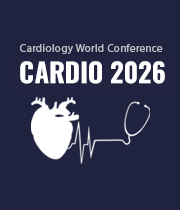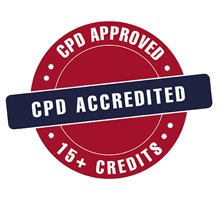Title : Ivabradine versus standard rate control therapy in rheumatic atrial fibrillation
Abstract:
Introduction: Rate control in Rheumatic Atrial Fibrillation remains a big challenge. Ivabradine can have a role for rate control in AF by suppression of increased automaticity in Pulmonary Veins and Left atrium and its action on Hyperpolarization-Activated Cyclic Nucleotide gated channel 4 current (HCN4) in AV node. We have previously demonstrated its benefit when added to maximally tolerated conventional therapy in rheumatic AF. (Katheria et al Indian Heart J. 2023). In this study we explored the role of ivabradine as monotherapy in rheumatic AF patients compared to standard rate control agents.
Methods: After institutional ethics approval, patients of persistent and/or permanent AF (HR>100 bpm) with rheumatic mitral stenosis and/or mitral regurgitation and not planned for a mitral valve intervention in next 3 months were prospectively randomized into two groups.
- Group A (Ivabradine, n=41): Patients underwent washout of previous rate control medications (5 half-lives) before initiating ivabradine 2.5 mg twice daily. After one week, the dose was titrated to 5 mg twice daily based on HR response. At 1 month, patients with<10% HR reduction were titrated to 7.5 mg twice daily.
- Group B (Standard Therapy, n=42): Patients continued or were initiated on beta-blockers or non-dihydropyridine CCBs at maximally tolerated doses.
The subjects were followed up for 6 months.
Results: Of 102 patients screened, 83 were included (41±9.2 years, 26% males, AF duration 5.9±2.3 years, baseline HR 101±17 bpm, baseline LA 47.4±5.8 mm, baseline LA strain 20.2±1.34%). Mean ivabradine dose was 9.8+1.6 mg, metoprolol 102±18 mg, diltiazem 131±38 mg and digoxin 0.25 mg.
Both groups achieved significant reduction in absolute HR from baseline to 6 months: Ivabradine (105.98±22.77 to 86.34±7.86 bpm, absolute reduction 19.64 bpm, % reduction 18.5%, p<0.0001), HR reduction in standard therapy group (92.43±23.54 to 82.95±10.04 bpm, absolute reduction 9.48 bpm, % reduction 10.2%, p=0.001). Final HR was similar in both groups.
Secondary Endpoints:
- 6 MWT significantly improved with ivabradine (334.39±80.78 to 360.73±69.51 m p<0.001), while there was no change with in standard therapy (376.90±82.21 to 383.57±76.25 m, p=0.115).
- Only the ivabradine group demonstrated significant decrease in BNP at 3 month (334.83±185.70 to 312.20±165.35 pg/ml, p=0.006) and sustained decrease till 6 months (302.70±150.28 pg/ml, p=0.01). In the standard therapy group, there was no significant change on BNP at 3 months, and only by 6 months did the BNP level decrease (296.31±200.15 pg/ml, p=0.016).
- Symptom Assessment - The proportion of patients with EHRA 2a, 2b and 3 were nearly similar in the two groups at baseline (17, 39 and 44% vs as 19,43 and 38% respectively).
- Amongst those on ivabradine, at 6 months, only 17/41 (41%) had residual EHRA Class 2b/3 symptom class, reflecting a symptomatic improvement in 42%.
- In the standard group, 22/42 (52%) had residual Class 2b/3 symptoms, reflecting an overall improvement in 29%.
- LA strain significantly improved in both groups (22.4±1.8% vs 21.9±2.3%, p=ns) and was comparable at follow up.
There was no safety issues encountered in any arm, and patients tolerated the drugs well.
Conclusions: Ivabradine was found to be safe and equally effective in comparison to standard rate control therapies in rheumatic AF.




